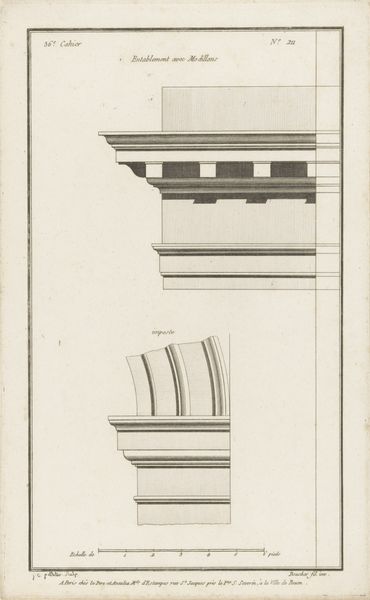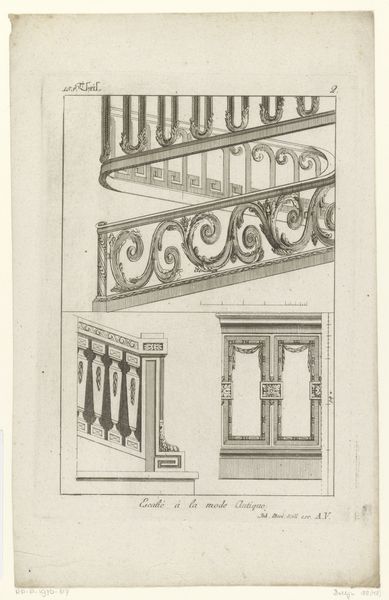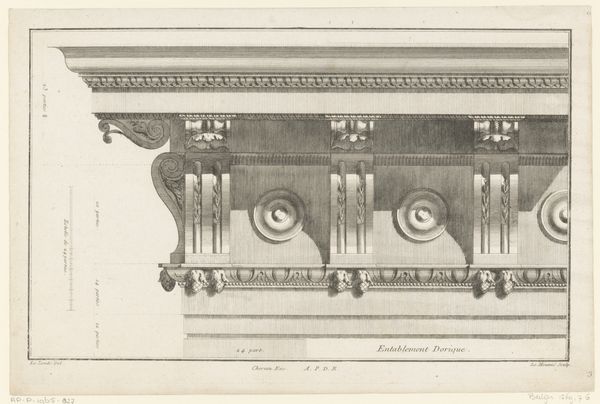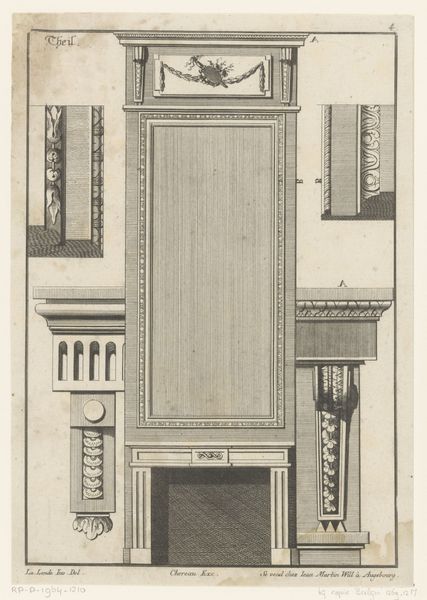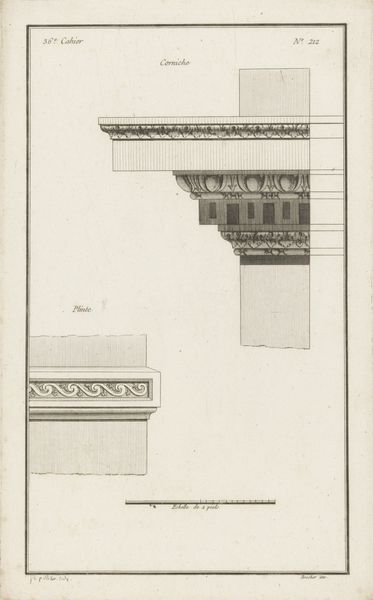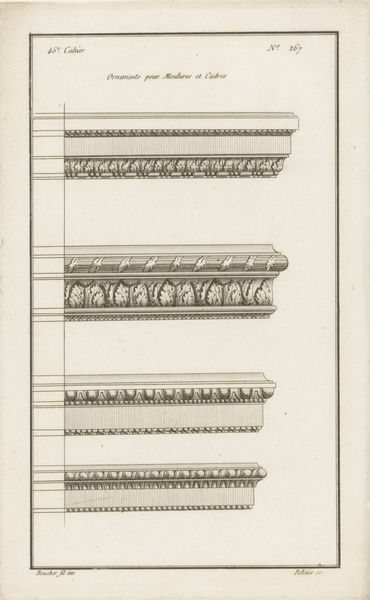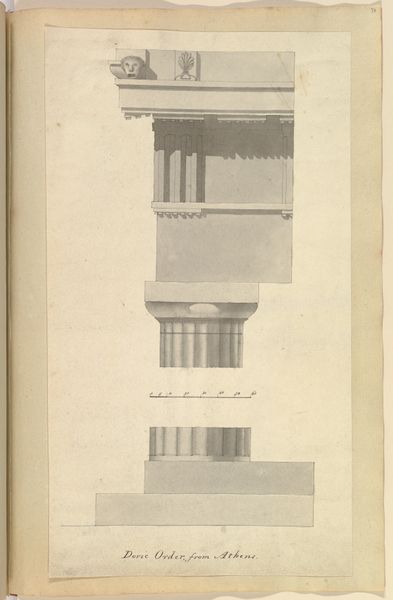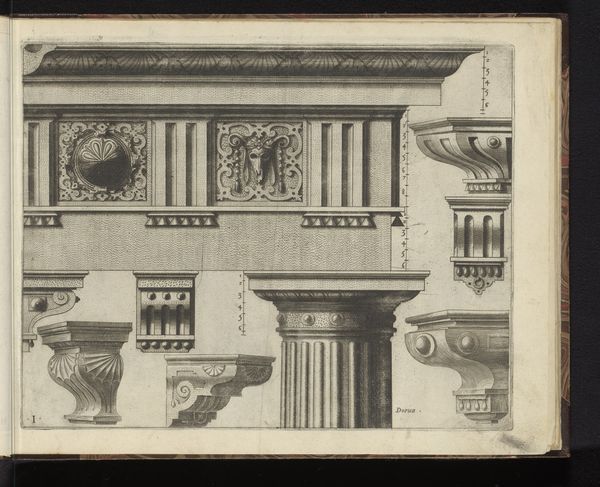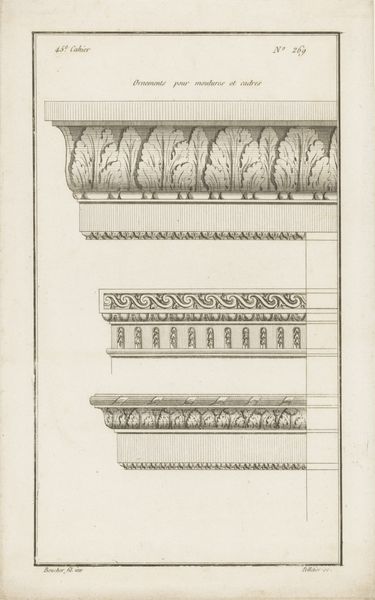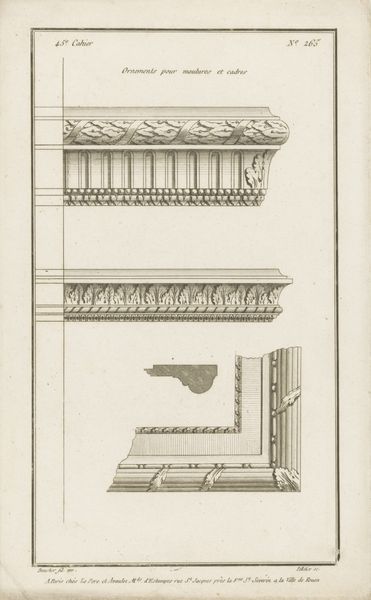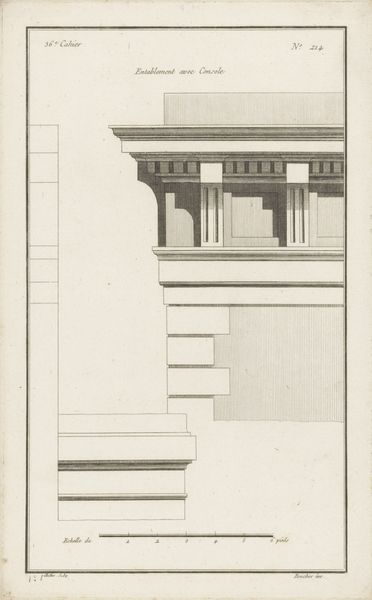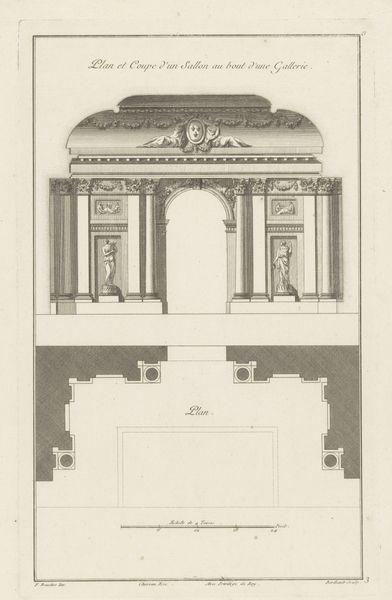
drawing, paper, engraving, architecture
#
drawing
#
neoclacissism
#
paper
#
geometric
#
line
#
academic-art
#
engraving
#
architecture
Dimensions: height 329 mm, width 205 mm
Copyright: Rijks Museum: Open Domain
Editor: This is "Twee kroonlijsten," or "Two Cornices," an engraving by Jean Pelletier from around 1772 to 1779, held at the Rijksmuseum. It looks so precise and technical. What significance might these designs have had in their time? Curator: Well, considering its Neoclassical style, we see more than mere architectural drawings; these are symbols of a renewed connection with the classical world. The cornice, in particular, acts as a visual echo of ancient temples and civic structures, whispering stories of republican virtue and imperial grandeur. Don't you feel a certain… permanence emanating from the geometrical composition? Editor: I see the geometry and the clean lines now that you mention the classic temples. What's interesting to me is that these symbols might carry different meanings for different social classes at the time? Curator: Precisely. For the elite, it symbolized their refined taste and education, steeped in classical learning. For the rising merchant class, perhaps it represented their aspirations to join those echelons, signaling their own embrace of "high culture". How do you perceive the engraving style in contributing to these symbolic readings? Editor: The lines are so clean and unemotional…it makes me feel like there is a cold perfection! Maybe that was also sending the signal of "high culture". Curator: Indeed. And in a world of changing social and political landscapes, these carefully designed elements become silent yet powerful affirmations of order, reason, and enduring values, visually threading the present to a glorified past. Editor: So it’s about more than just building design; it’s about communicating status, values, and connecting to historical legacies through imagery. Thank you. Curator: And hopefully prompting us to think about how these symbols continue to resonate in our built environment today.
Comments
No comments
Be the first to comment and join the conversation on the ultimate creative platform.
